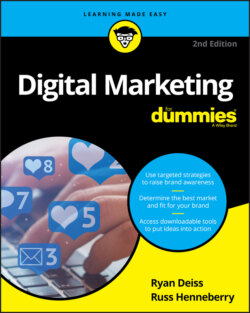Читать книгу Digital Marketing For Dummies - Ryan Deiss - Страница 31
Avoiding an Optimization Mistake
ОглавлениеAs you begin to optimize your customer journey, your instinct may be to approach it from the beginning and start with Step 1: generating awareness. But that’s not where you want to start. In fact, the awareness stage is the last place you want to start when optimizing your customer journey.
Why?
If you start from the beginning — as the saying goes — you’re pouring more water into a leaky bucket. All the work you’re doing to optimize the beginning steps of the customer journey will be for nothing if you have holes later in the journey that are causing your customers to get stuck or not convert at all.
To avoid this pitfall, you don’t want to focus your optimization efforts on the beginning of the journey. Instead, you’ll start toward the end of the journey.
When optimizing your customer journey, it’s best to start at the ascend stage (Step 6). Start here with the perspective of, “How do I increase the average customer value? How do I remove the bottlenecks that are causing the customer to get stuck?” By plugging any holes in the ascension stage, you’ll be able to maximize your profit. And with more profit, you’ll be able to invest more into your journey (and not send leads and customers into a leaky bucket).
When you’ve maximized the ascension stage, work backwards.
Optimize your excite stage (Step 5).
Then optimize your convert stage (Step 4).
Then the subscribe stage (Step 3).
Followed by the engage stage (Step 2).
And finally, ’optimize the awareness stage (Step 1).
After you’ve worked backwards and optimized all of the beginning stages of the customer journey, you then turn your attention to optimizing the final two stages — brand advocates (Step 7) and brand promoters (Step 8), looking for ways to generate more of each.
This is important and the key to optimizing your customer journey: work on one stage at a time. Focus all of your efforts on that one stage before you move onto the next one. Don’t start a new stage until you’ve fully optimized the current stage you’re working on. In the same vein, don’t work on multiple stages simultaneously. Fix one stage at a time. If you jump around from stage to stage or optimize multiple stages at once, you’re likely to miss holes and your optimization will be for nothing. Optimizing only one stage at a time helps you plug all your leaks and remove the bottlenecks for your customer.
As you optimize each stage, you’re not just looking for holes you can plug. You’re looking for bottlenecks the customer is facing, things that cause them to get stuck and prevent them from moving onto the next stage in the journey. And you’re looking to remove those barriers so you can plug those holes and get more leads and customers at each stage of the customer journey.
